Abstract
1. A method is described by which a car simulator can be used to measure, simultaneously, motor-perceptual performance and physiological responses of human subjects under different levels of task difficulty or stress.
2. Motor-perceptual performance was measured in terms of reaction times taken by subjects to carry out steering, braking and operation of traffic indicators in the simulator. Subjects were instructed to carry out the different driving manoeuvres by means of a command panel containing five coloured lights. Three levels of task difficulty or stress were devised. In level 1 only the light signals were used. In level 2 the driving simulator film was shown and all of the light signals reinforced the movements of the car in the film. Level 3 was similar to level 2, with the exception that whilst some of the light signals reinforced the movements of the car, others deliberately conflicted with it.
3. Physiological responses measured were heart rate, blood pressure, respiration and calf blood flow. Personality was also measured by means of the Cattell 16 personality factor questionnaire.
4. Analysis of variance of the performance of 15 subjects showed significant variation between the three task levels (P=<0·001 for steering reaction times; P=<0·01 for brake and indicator reaction times). In all cases the reaction times were longest for level 3, indicating that this was the most difficult task. The number of anticipated responses to steering, braking and traffic indicator signals was highest in level 2, while the number of corrections to steering and braking responses was lowest in level 2. None of these differences was statistically significant.
5. Of the physiological variables, the heart rate showed a progressive increase from task levels 1 to 3 but only those between levels 1 and 3 were statistically significant (P<0·05).
6. The results are discussed in relation to the validity of the method. It is concluded that by means of this method it is possible to produce controlled and reproducible degrees of stress and under conditions which are also suitable for the investigation of pharmacological agents upon it.
Full text
PDF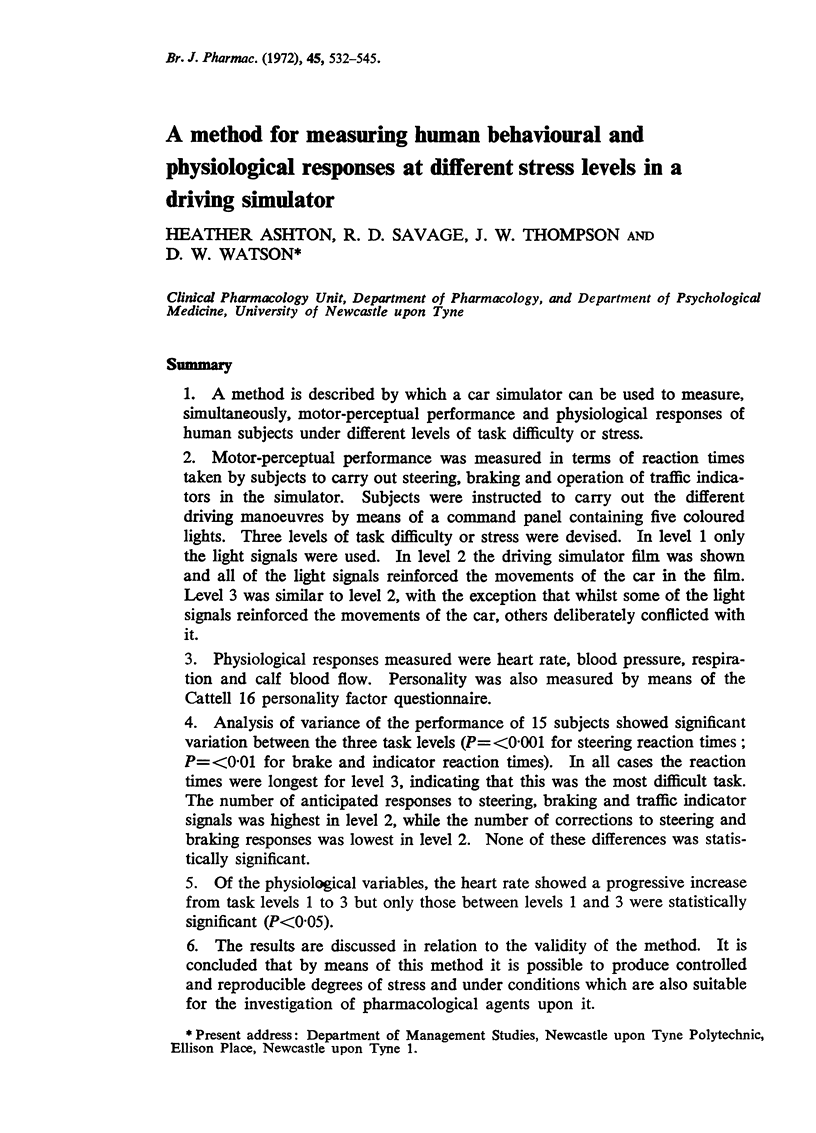
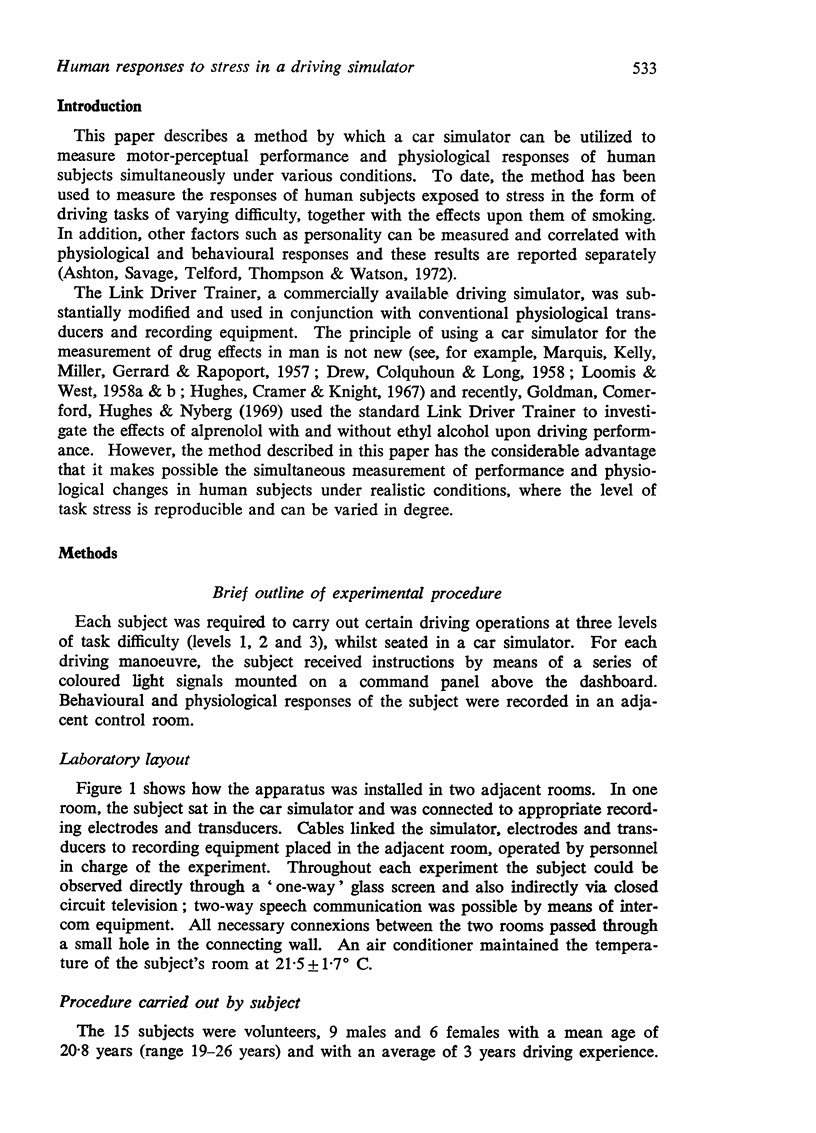
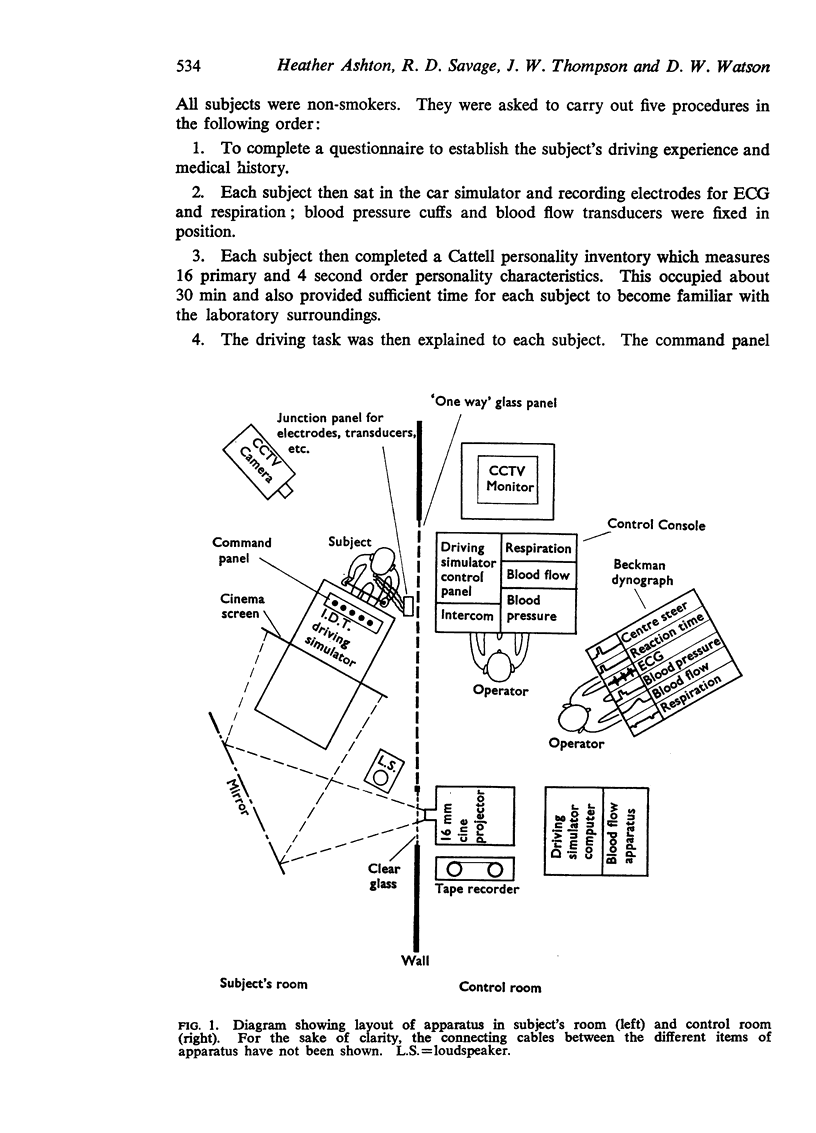
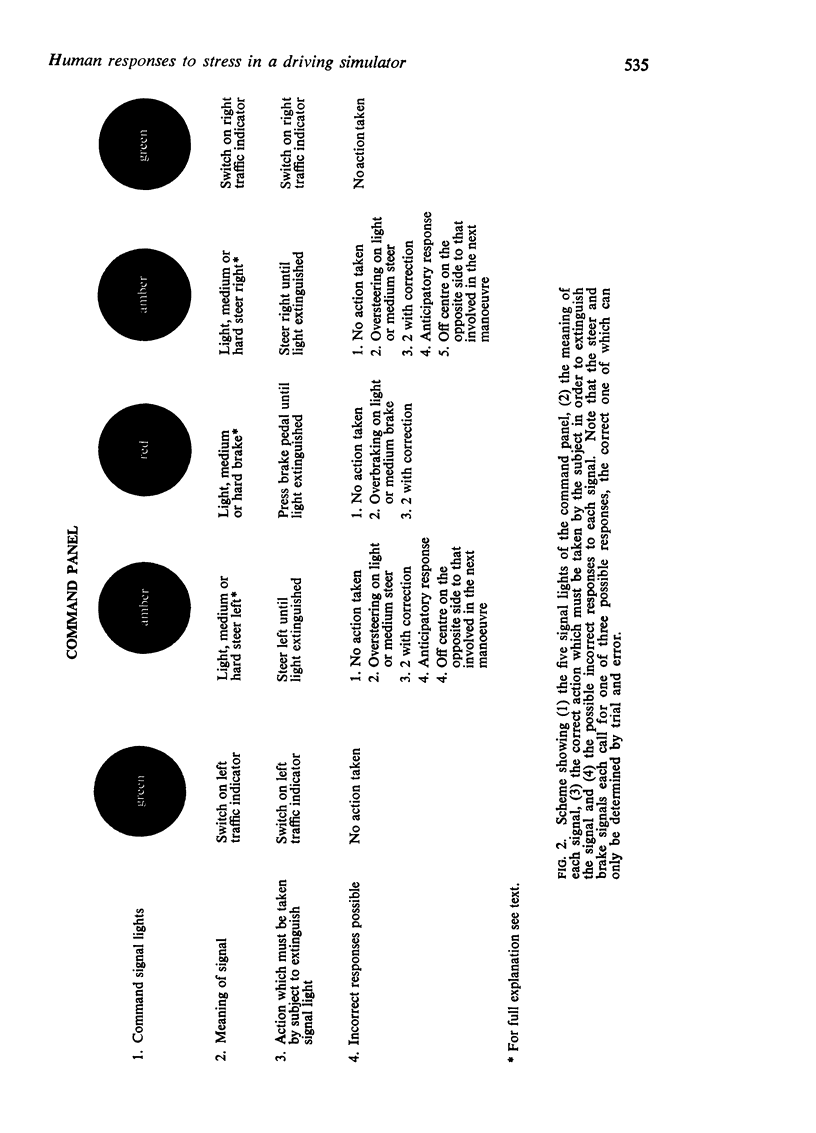
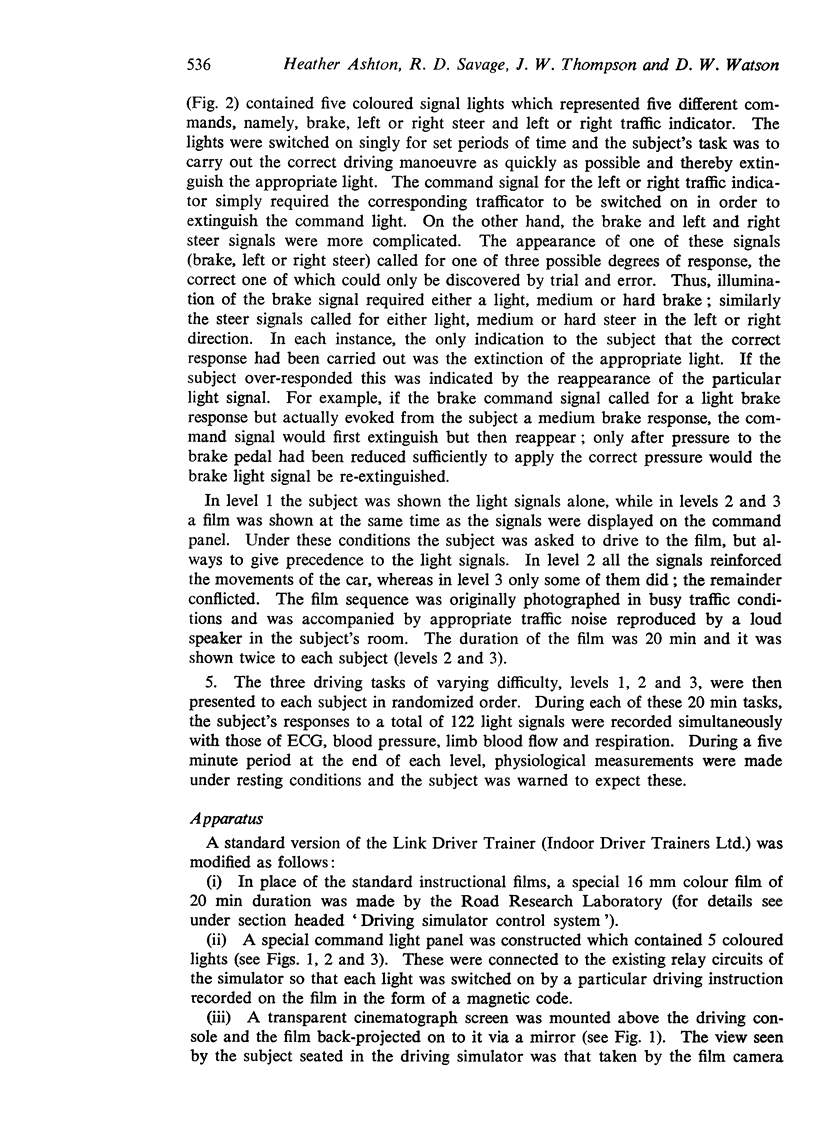
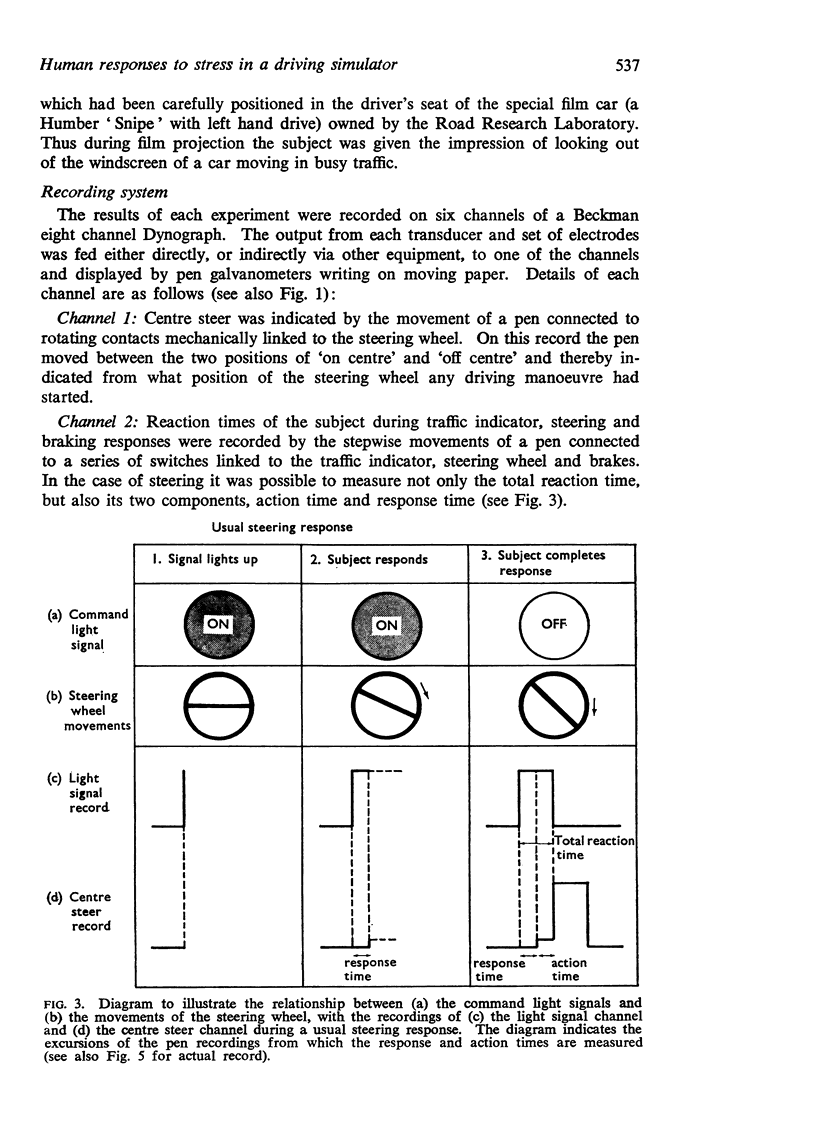
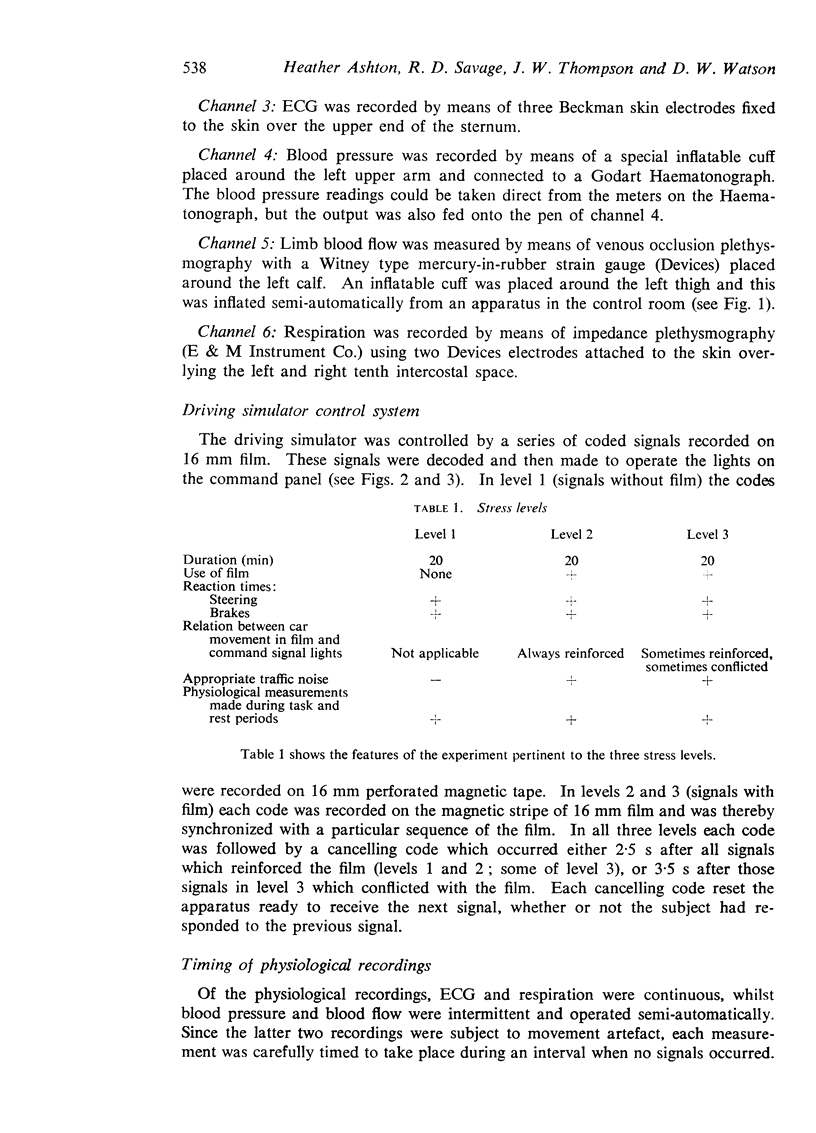
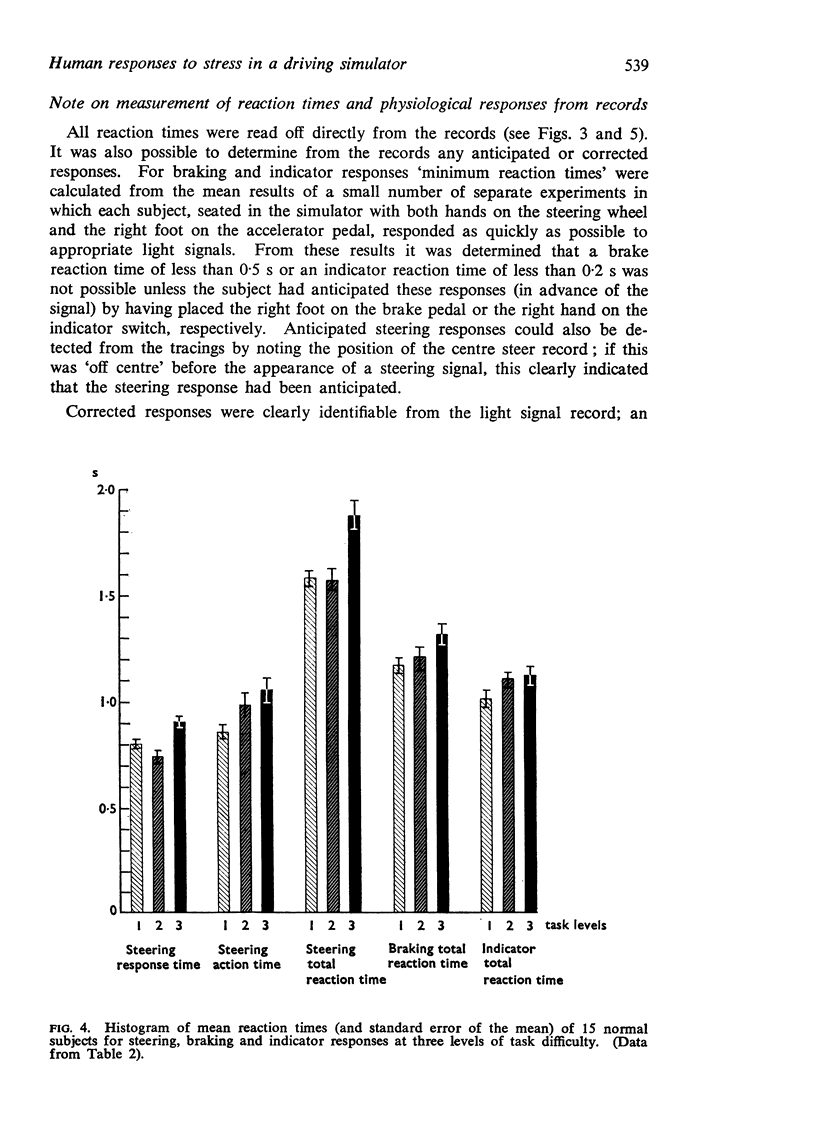
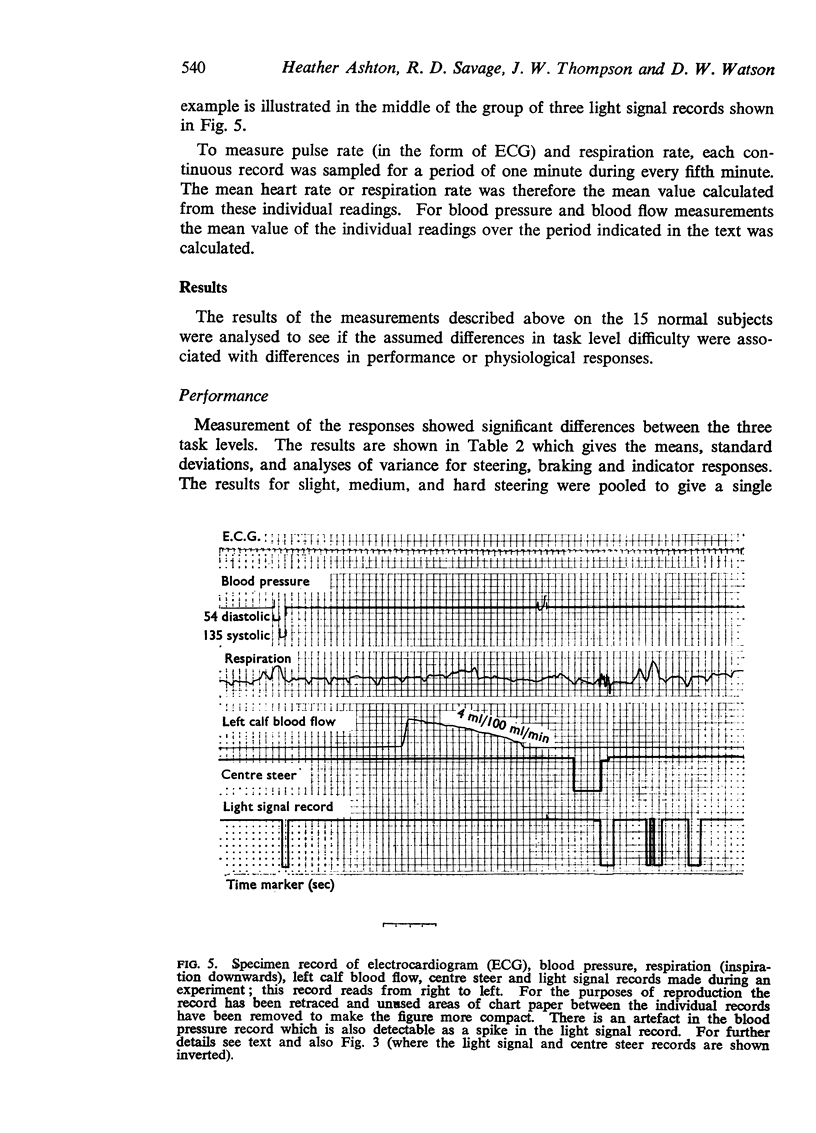
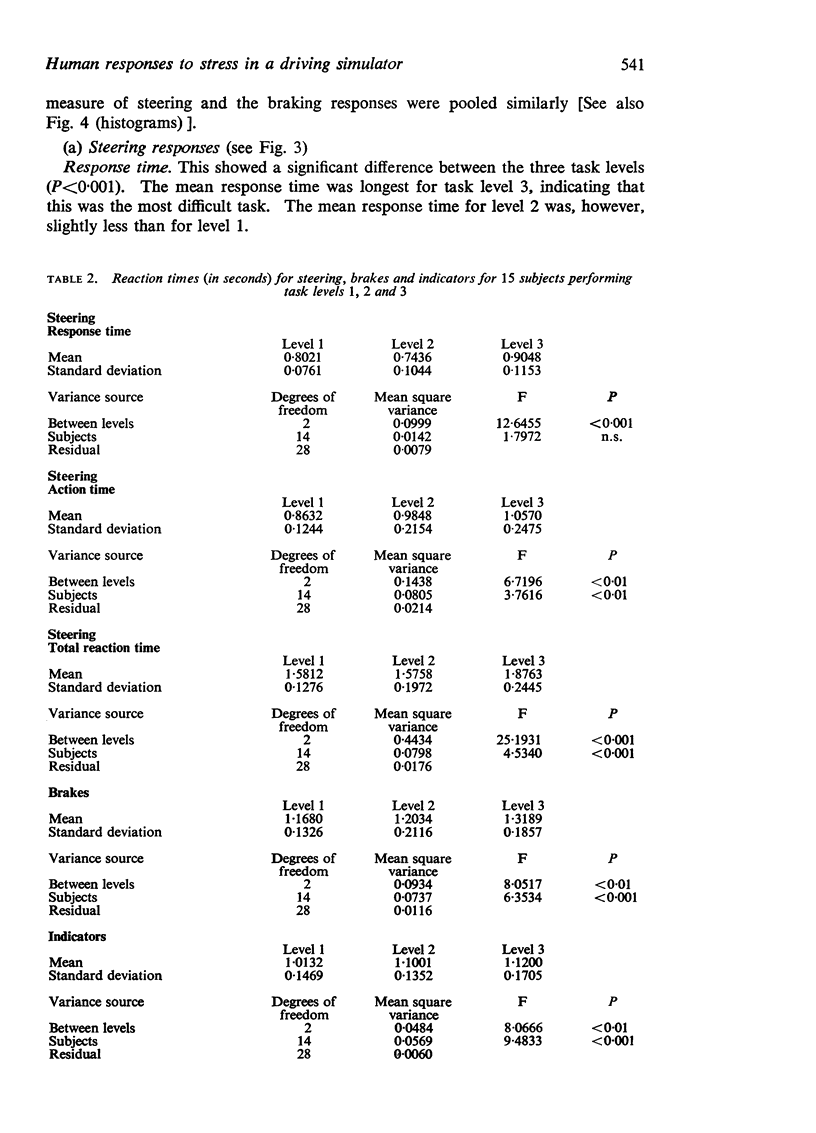
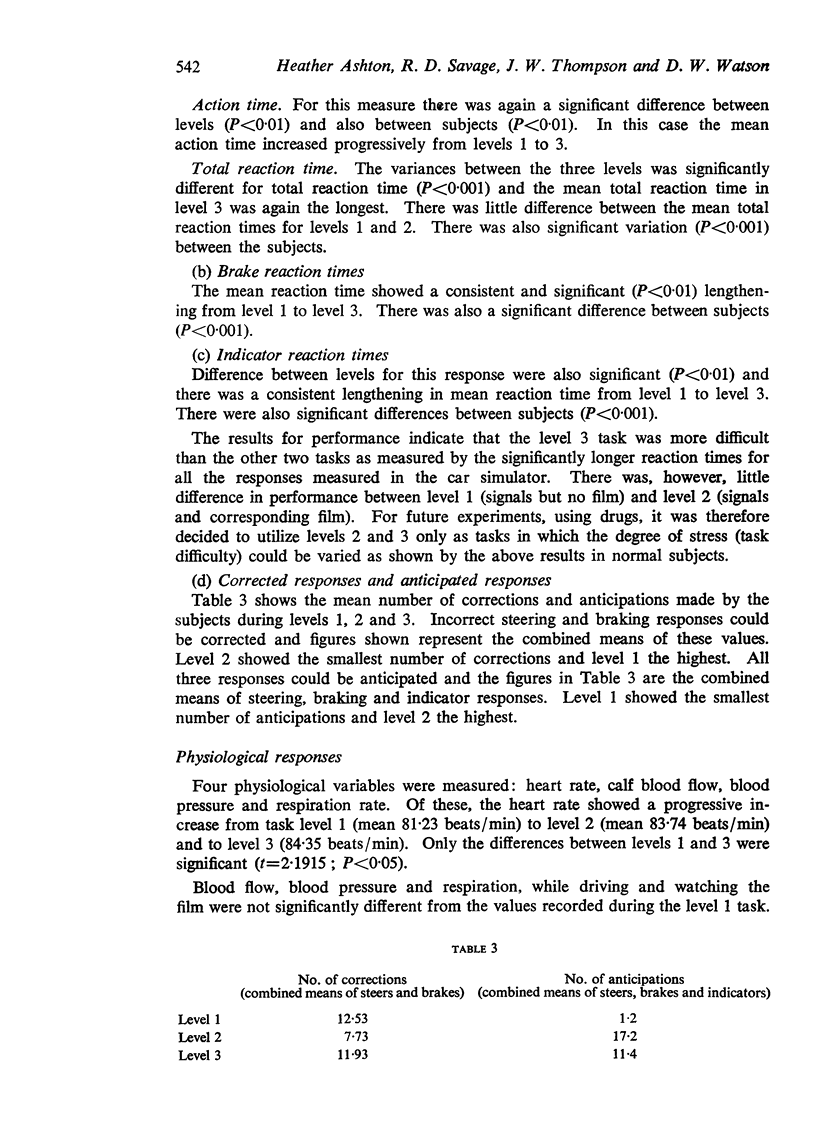
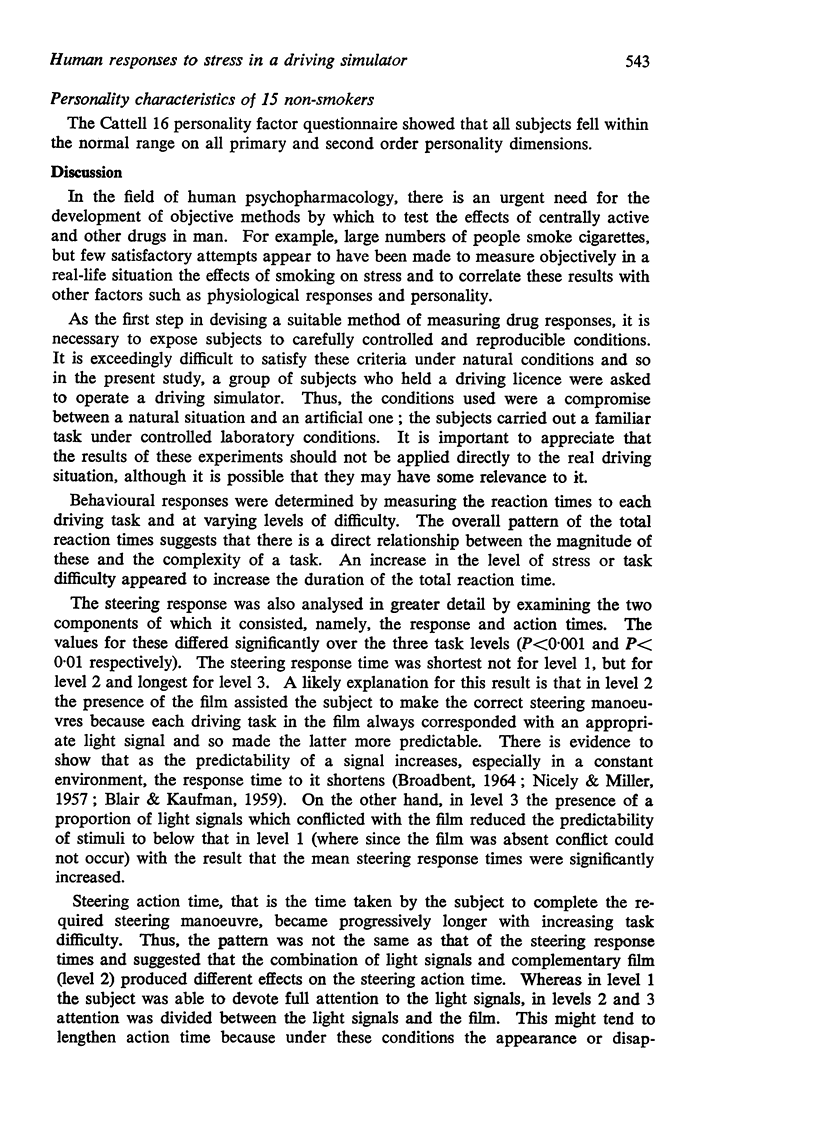
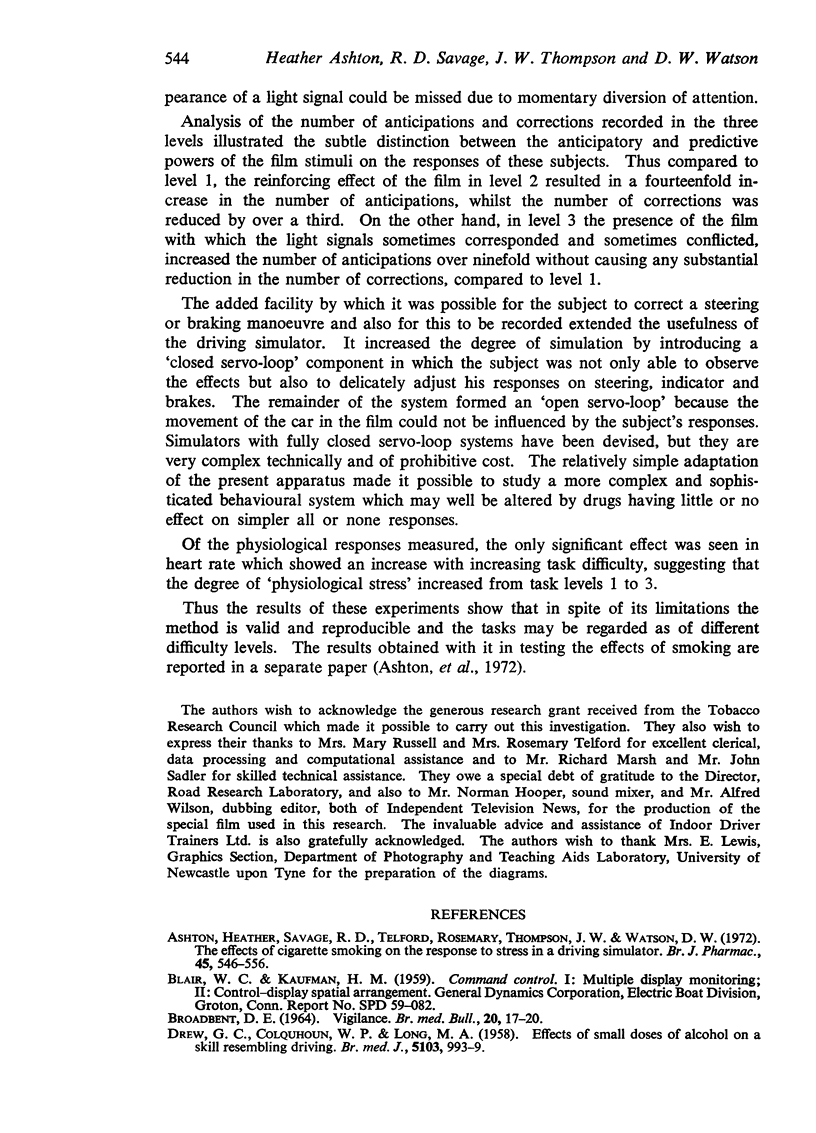
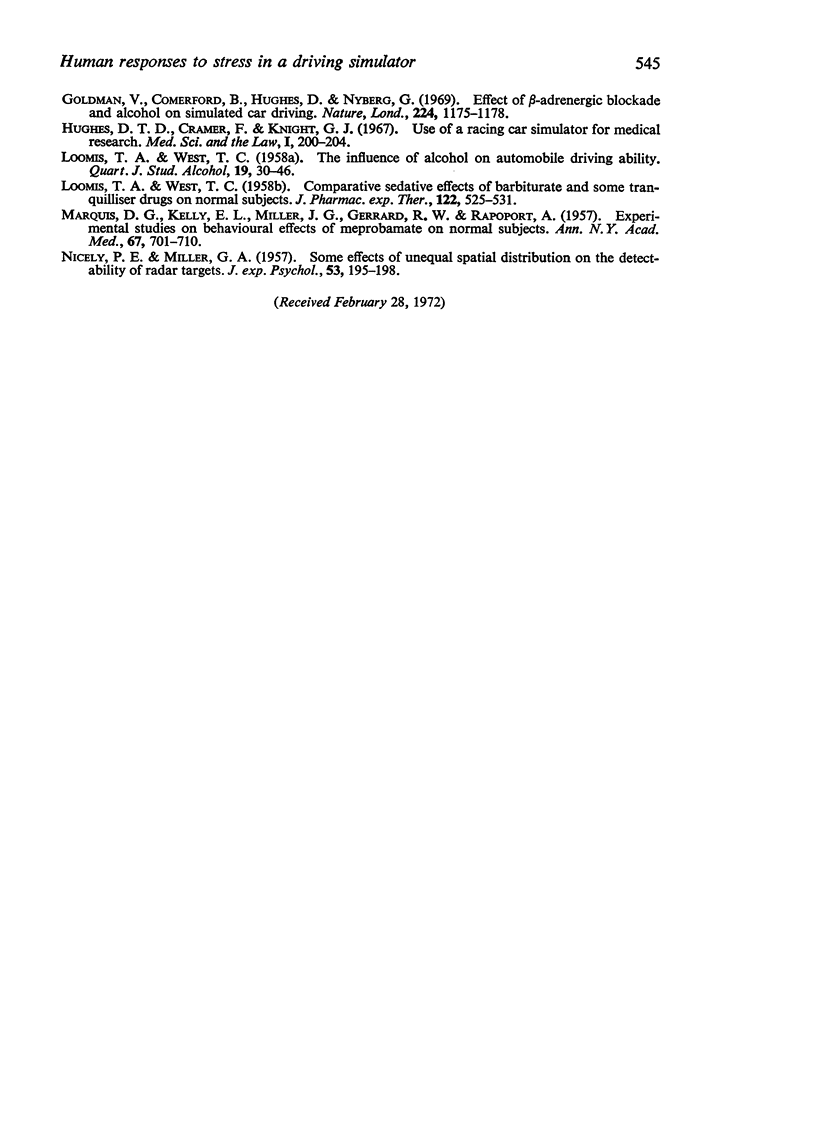
Selected References
These references are in PubMed. This may not be the complete list of references from this article.
- Ashton H., Savage R. D., Telford R., Thompson J. W., Watson D. W. The effects of cigarette smoking on the response to stress in a driving simulator. Br J Pharmacol. 1972 Jul;45(3):546–556. doi: 10.1111/j.1476-5381.1972.tb08112.x. [DOI] [PMC free article] [PubMed] [Google Scholar]
- BROADBENT D. E. VIGILANCE. Br Med Bull. 1964 Jan;20:17–20. doi: 10.1093/oxfordjournals.bmb.a070275. [DOI] [PubMed] [Google Scholar]
- DREW G. C., COLQUHOUN W. P., LONG H. A. Effect of small doses of alcohol on a skill resembling driving. Br Med J. 1958 Oct 25;2(5103):993–999. doi: 10.1136/bmj.2.5103.993. [DOI] [PMC free article] [PubMed] [Google Scholar]
- Goldman V., Comerford B., Hughes D., Nyberg G. Effect of beta-adrenergic blockade and alcohol on simulated car driving. Nature. 1969 Dec 20;224(5225):1175–1178. doi: 10.1038/2241175a0. [DOI] [PubMed] [Google Scholar]
- Hughes D. T., Cramer F., Knight G. J. Use of a racing car simulator for medical research the effects of marzine and alcohol on driving performance. Med Sci Law. 1967 Oct;7(4):200–204. doi: 10.1177/002580246700700407. [DOI] [PubMed] [Google Scholar]
- LOOMIS T. A., WEST T. C. Comparative sedative effects of a barbiturate and some tranquilizer drugs on normal subjects. J Pharmacol Exp Ther. 1958 Apr;122(4):525–531. [PubMed] [Google Scholar]
- LOOMIS T. A., WEST T. C. The influence of alcohol on automobile driving ability; an experimental study for the evaluation of certain medicological aspects. Q J Stud Alcohol. 1958 Mar;19(1):30–46. [PubMed] [Google Scholar]
- MARQUIS D. G., KELLY E. L., MILLER J. G., GERARD R. W., RAPOPORT A. Experimental studies of behavioral effects of meprobamate on normal subjects. Ann N Y Acad Sci. 1957 May 9;67(10):701–711. doi: 10.1111/j.1749-6632.1957.tb46007.x. [DOI] [PubMed] [Google Scholar]
- NICELY P. E., MILLER G. A. Some effects of unequal spatial distribution on the detectability of radar targets. J Exp Psychol. 1957 Mar;53(3):195–198. doi: 10.1037/h0039930. [DOI] [PubMed] [Google Scholar]


